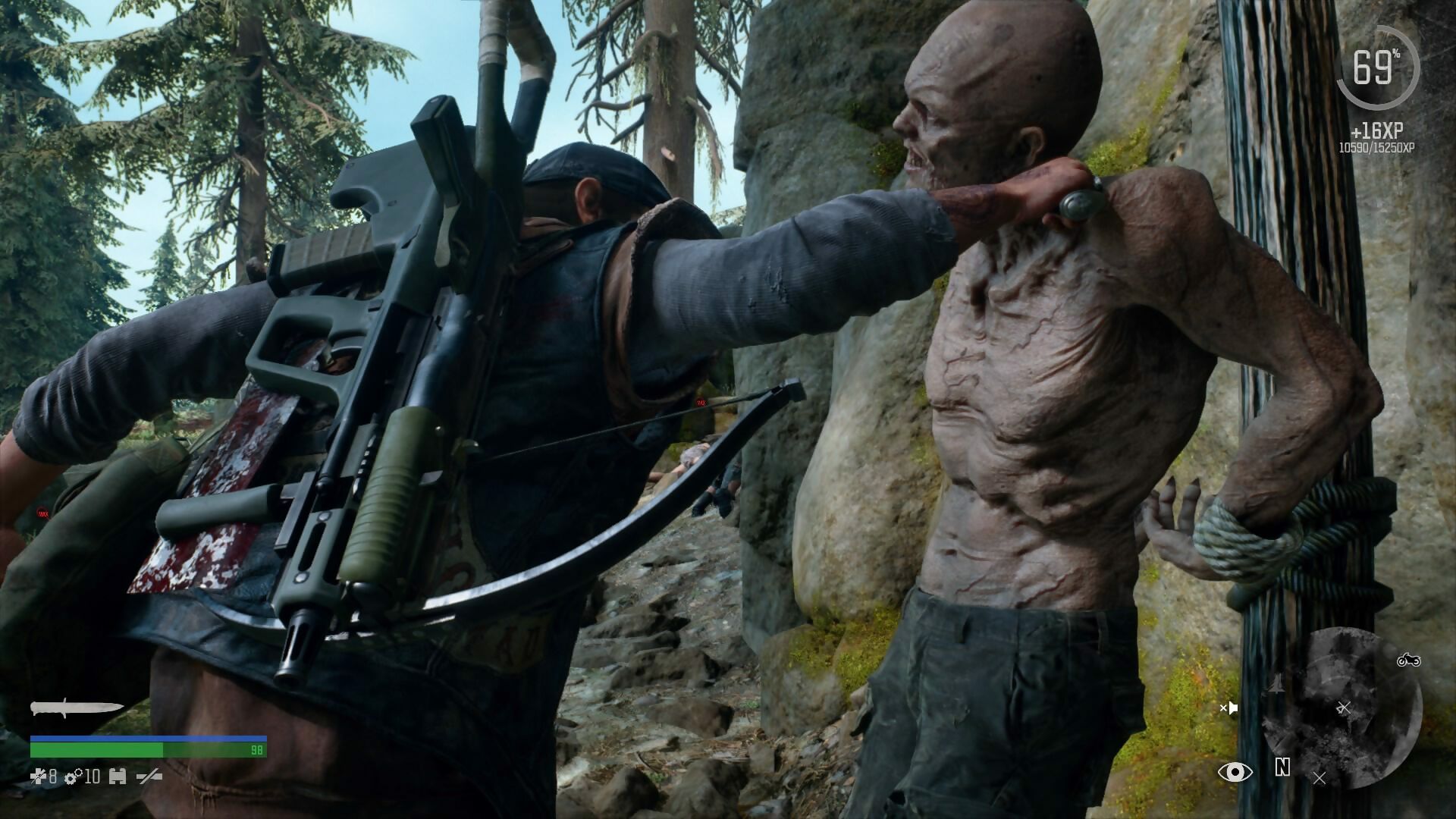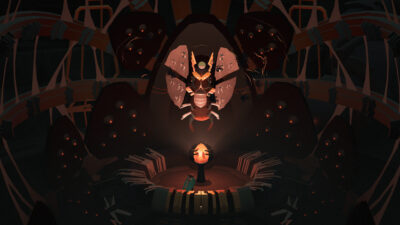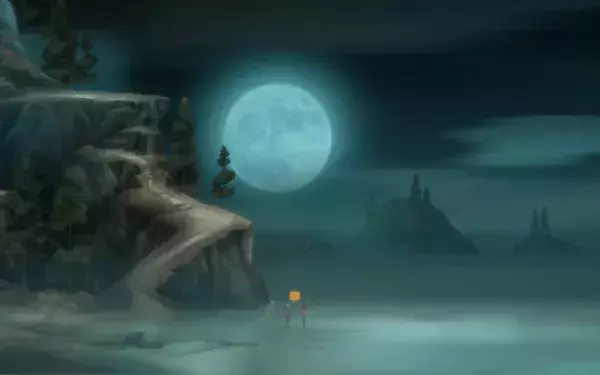
Stunning to look at and fun to ride through, but is Days Gone all you need to fill your days (until they’re gone)?
From the outset, Days Gone strikes you as another one of those titles that seemingly ticks all the boxes you’d expect any fetch quest-driven open-world game to. Not only that, but it also places itself in a setting witnessed in games dozens of times and in dozens of different ways: the zombie apocalypse.
There might have been 2687 days gone between Bend’s last game – Uncharted: Golden Abyss – and this one, but there’s something very 2011 about Days Gone.
It starts out innocently enough, offering insight into the hows of Oregon’s collapse, two years before it descends into the ravaged landscape you eventually get to travel in and make your playground.
Protagonist Deacon St. John is instantly forced to make a tough decision in the surrounding chaos, and it’s one that plagues him for the bulk of the 30-hour journey Days Gone sets him on. This is a story about love, redemption, and trying to discern right from wrong in a lawless land, even if some stilted pacing and misjudged voice acting renders it a rather melodramatic one.
Getting into the open world proper, Bend Studio’s rendition of the Pacific Northwest is truly stunning. Even when playing on a standard PS4, there were numerous times where I found myself riding up to a ravine, stepping off my bike and just soaking up the atmosphere created by the near-endless view of dense forests, dilapidated towns, and bandied-together community encampments.
Every part of Days Gone’s large map is stacked with things to do, and getting to them is always made fun, thanks to being able to hop on your bike at any time. Initially, Days Gone’s centrepiece feels sloppy to handle, but it’s nothing a few upgrades like a bigger engine, added nitrous, and grippier tyres can’t fix.
Survival is key in the world of Days Gone, and this is reinforced in how much of your time spent within it involves taking down ambush camps, combing through run-down buildings for precious scrap used for repairs and upgrades, and completing jobs for local community camps in order to build up trust so they can sell you things.
All in all, there’s not too much asked of you here that separates Days Gone from, say, a Far Cry. But it’s through this simple trust mechanic where it feels like your actions carry more weight than in most games of this ilk.
You see, Deacon is a drifter, which ostensibly makes him a glorified handyman for survivors in need – albeit a reluctant one. Complete any of the long list of tasks each portion of the map presents you with – take down a horde, uncover a research site, clear an area of infestation – and other survivors will take notice. This plays into one of Days Gone’s better ideas in which every mission falls under what’s known as Storylines, where everything you do doesn’t just happen in a vacuum, but also feeds into a spider-web of interlinking narratives.
It works better in theory than in execution, but it still feels good to know that clearing a tunnel of freakers won’t just make my future commutes across the map far easier – it’ll result in rewards at a nearby community base, too.
As solid as Days Gone appears on paper, however, I couldn’t help feeling that so much of what I was doing I had experienced numerous times before in other – far better – open-world games. Sure, Days Gone is a first-party triple-A title, and as such can make the most of the performance boons that come from being developed exclusively for one console, but it still boils down to having you perform endless fetch quests in service of a wider story that feels clichéd.
“Don’t buy into any of the biker stereotypes you see on TV,” our hero enthuses to his beloved in one scene, “we’re actually quite charming.” Deacon, my boy, you’re living in a dream world.
It’s made even more disappointing when you consider that Days Gone’s much-publicised standout feature, the World War Z-style freaker hordes capable of pouring on top of one another to create an endless river of flesh-eaters, turn out to be more of an annoyance than a fair challenge.
You’re advised to go in smartly equipped to deal with a situation before engaging with a horde head on, but their tendency to appear in places you’d least expect is at odds with this.
Even with a full stock of grenades, Molotovs, and enough scrap to keep my melee weapon fighting fit, hordes would always become too tricky to handle, forcing me to just ignore them and do something else.
The role of hordes in the main campaign is practically non-existent until the late game. Leaving the ‘best’ until last may have been Bend Studio’s intention, but the hordes’ existence as just another optional side objective says a lot about how integral it is to the core Days Gone experience.
Overall, Days Gone is a competently made open-world game, but it somehow manages to feel lesser when you realise it doesn’t particularly excel in any area; whether that’s combat, exploration, missions, or even traversal.
It’s unacceptable for this style of game not to advance at least one factor in a post-Witcher 3 world (that being 2015-on), especially when it’s a first-party game with all the expectations that come along with one. Rather than reinvent any of these wheels, Days Gone is often left spinning them instead.
Highlight
Much like the bike at the centre of Days Gone, Deacon himself can also be upgraded to help make him a far more effective drifter. Skill trees are split out into three separate categories: Melee, Ranged, and Survivor, encouraging players to experiment with their own play style.
Verdict: 61%
While stunning to look at and fun to ride through, Days Gone disappoints as just another textbook open-world game.
Info
Genre: Open-world
Format: PS4 (tested)
Developer: SIE Bend Studio
Publisher: Sony Interactive Entertainment
Price: £49.99
Release: Out now





